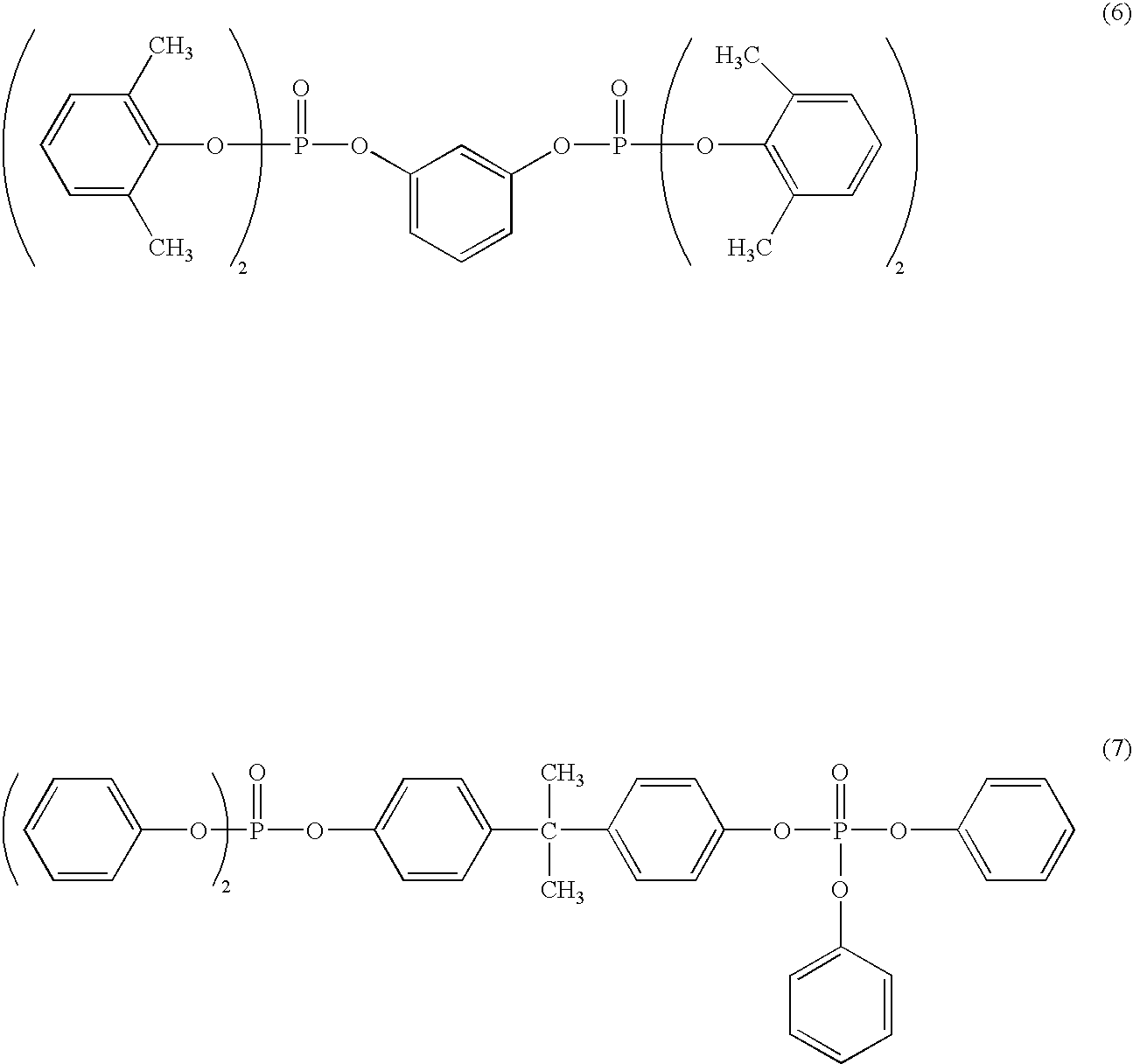Flame-retardant polybutylene terephthalate resin composition and formed article
a flame-retardant polybutylene and resin technology, applied in the direction of plastic/resin/waxes insulators, dyeing process, organic insulators, etc., can solve the problem of losing an essential property of resin, the use of flame-retardant halogens that contain none of such halogens is becoming desired, and the effect of high flame-retardant polybutylen
- Summary
- Abstract
- Description
- Claims
- Application Information
AI Technical Summary
Benefits of technology
Problems solved by technology
Method used
Image
Examples
reference example 1
(A) Polybutylene Terephthalate Resin (Hereinafter, Simply Referred to as PBT)
[0122] Toray PBT-1100S (produced by Toray Co.): A PBT of 0.85 in intrinsic viscosity (25° C., an ortho-chlorophenol solvent) was used.
reference example 2
(A) Polyethylene Terephthalate Resin (Hereinafter, Simply Referred to as PET)
[0123] Mitsui PETJ005 (produced by Mitsui PET Resin Co.): A PET of 0.65 in intrinsic viscosity (25° C., a mixed solvent of phenol / tetrachloroethane at 1:1) was used.
reference example 3
(B) Vinyl Based Resin
[0124] An acrylonitrile / styrene copolymer (hereinafter, simply referred to as AS) of acrylonitrile / styrene copolymer (13 / 87% by weight) was used. Incidentally, the limiting viscosity thereof measured at 30° C. in a methyl ethyl ketone solvent is 0.42 dl / g.
[0125] An As of acrylonitrile / styrene copolymer (26 / 74% by weight) was used. Incidentally, the limiting viscosity thereof measured at 30° C. in a methyl ethyl ketone solvent is 0.45 dl / g.
[0126] An AS of acrylonitrile / styrene copolymer (45 / 55% by weight) was used. Incidentally, the limiting viscosity thereof measured at 30° C. in a methyl ethyl ketone solvent is 0.48 dl / g.
[0127] An epoxy-modified AS of acrylonitrile / styrene / glycidyl methacrylate copolymer (25.5 / 74 / 0.5% by weight) was used. Incidentally, the limiting viscosity thereof measured at 30° C. in a methyl ethyl ketone solvent is 0.53 dl / g.
[0128] An AS of acrylonitrile / styrene copolymer (7 / 93% by weight) was used. Incidentally, the limiting viscosit...
PUM
| Property | Measurement | Unit |
|---|---|---|
| particle diameter | aaaaa | aaaaa |
| particle diameter | aaaaa | aaaaa |
| particle diameter | aaaaa | aaaaa |
Abstract
Description
Claims
Application Information
 Login to View More
Login to View More - R&D
- Intellectual Property
- Life Sciences
- Materials
- Tech Scout
- Unparalleled Data Quality
- Higher Quality Content
- 60% Fewer Hallucinations
Browse by: Latest US Patents, China's latest patents, Technical Efficacy Thesaurus, Application Domain, Technology Topic, Popular Technical Reports.
© 2025 PatSnap. All rights reserved.Legal|Privacy policy|Modern Slavery Act Transparency Statement|Sitemap|About US| Contact US: help@patsnap.com



